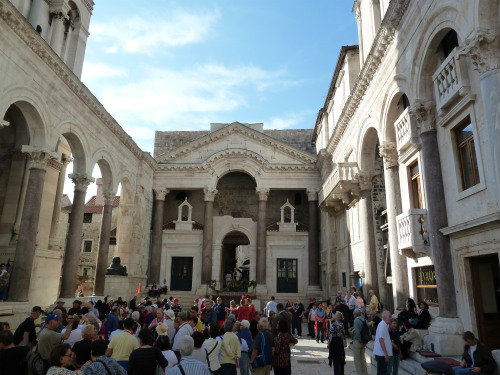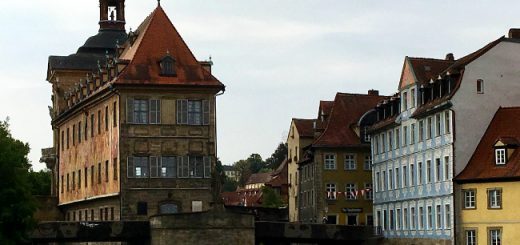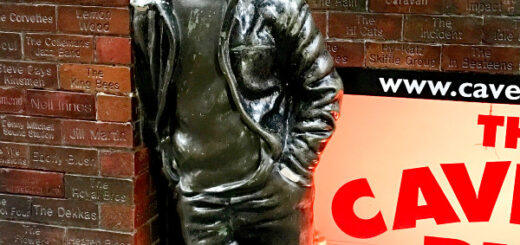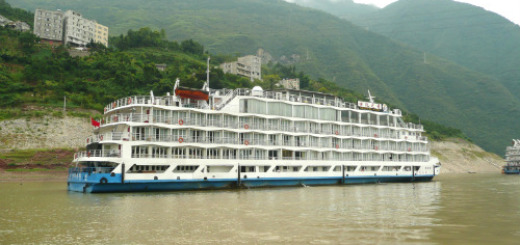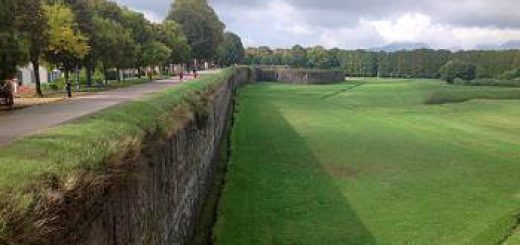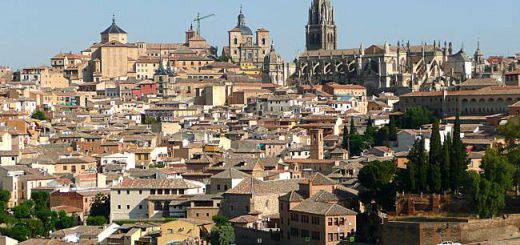Historic Split and Trogir

Our cruise ship, Celebrity Silhouette, was required to moor around the point of the Split peninsula because there were already two other cruise ships in port, so we caught the tender in to the city. The view along the Riva harbour promenade was most attractive with palm trees and restaurants nested in among gaps in the ancient city walls. There we took an escorted tour of Split courtesy of one of the ship’s shore excursions.
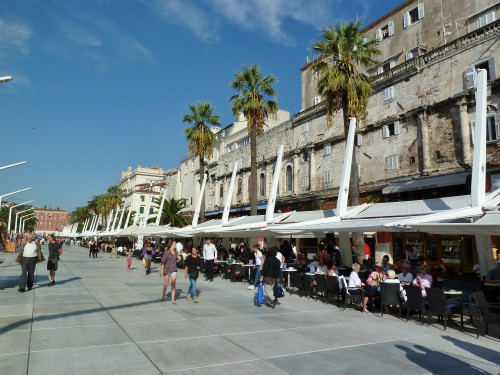
Split is Croatia’s second biggest city and one of the oldest. Founded as a Greek colony in the 4th Century BC and later fortified by the Roman Emperor Diocletian in 293 – 305AD, Split has been under the control of many empires until, with the rest of Croatia, it seceded from Yugoslavia in 1991. The old part of the city exists within the walls of Diocletian’s Palace and has been included in the UNESCO list of World Heritage Sites. This feature, together with a busy harbour providing ferries to nearby islands, makes tourism a major source of the city’s income.
Diocletian’s Palace is built on a slightly uneven rectangle roughly 180m from east to west, 215m north to south and has walls 26m high. In the 7th century those walls provided refuge for the local people who fled there to escape the invading barbarians. The palace is not only a place of historical interest but it also contains Split’s most interesting shops, bars, restaurants and cafes. Through the Bronze Gate – an unassuming doorway between cafes – is where we entered through the city walls into the Podrum or basement halls where there were market stalls were set up selling local souvenirs, jewellery and crafts. When it was first built this sea gate would have been right on the water, allowing private access to the Emperor and facilitating the transfer of goods from ships to the underground cellars.

Then we mounted the steps to the Vestibul (now missing its domed roof) where we were told a cappella groups regularly perform due to the great acoustics. This was the entrance foyer to the Emperor’s private apartments. We emerged in the heart of the Palace – the colonnaded court or Peristil – which served as an ancient meeting or entertainment space, and does now still. Naturally, with a couple of cruise ships in port, the place was crowded with tourists. Looking back at the Protiron, the entrance to the private quarters, one could easily imagine the Emperor addressing the crowds assembled below.
On one side of the square there is a magnificent 13th Century Romanesque bell tower and an octagonal building which served as Diocletian’s mausoleum after his death. Ironically, for a man who persecuted the early Christians, his final resting place later became a Christian church, now the Cathedral of Sv. Duje (St Domnius), one of his victims. For a fee, it is possible to tour the interior of the church and to climb the stairs of the tower for views over the town. On the other side of the square are various shops and restaurants occupying former palace buildings.
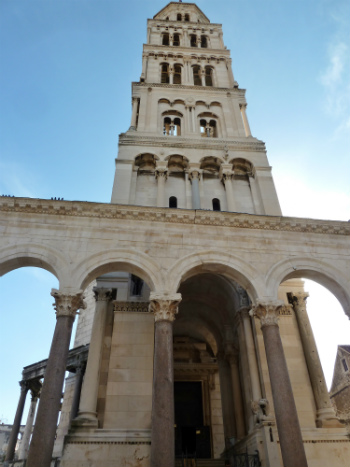
Our ship’s excursion then took us on a half hour side trip along the coast to Trogir – a small island linked to the mainland by a small bridge – so we left the bus on the mainland side and did the tour on foot. Like a time capsule of architectural styles favoured by the Greeks, Romans and Venetians since the 3rd century BC, Trogir was named a UNESCO World Heritage Site in 1997. It is a tiny old town, with narrow, cobblestone passageways winding between Romanesque buildings and Renaissance-era palaces, along with spectacular stone houses, about 10 churches or monasteries, towers and the Kamerlengo Fortress at the western end. Part of the city walls, built between the 13th and 14th centuries, is still visible today on the southern side of the city. The south gate has a loggia built against the walls. In the past, the gate would be closed for security in the evenings and travellers arriving afterwards would have to bed down for the night in this covered porch.

The Cathedral of Sv. Lovre (St Lawrence) is most impressive and the most important building in Trogir. It is considered to be one of the finest churches in Croatia, with the Chapel of St John of Trogir, a former bishop, being the most beautiful part. Here the altar is surrounded by baroque angels and St John’s sarcophagus lies atop. A local artist, Radovan, carved the famous main portal in the 13th century.
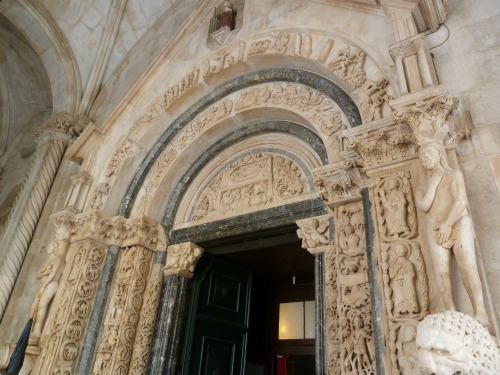
As we left the cathedral, we saw a group of five men standing in the city loggia nearby performing traditional Dalmatian songs for the tourists. This covered meeting place was once used as a courthouse and for public announcements. It faces onto the old town square which was set up when we were there for outdoor dining. Beside it is the tower of what remains of St Sebastian’s Church topped by a large, blue-faced Renaissance clock. The church was built in 1476 in thanks for saving the city from the plague. On another side is the Town Hall with its tourist information centre.

On the way back to Split we visited the restored Pantan Old Mill, a fortified Renaissance water mill fed by several streams onto a lake. This is now a protected wetland reserve, popular with birdwatchers and kayakers. The restoration has left several mediaeval cooking areas and grinding wheels to show tourists how it was once operated. As we arrived we were greeted by musicians in traditional costume before being treated to an authentic Croatian lunch of bread, cured meats, cheese and wine.
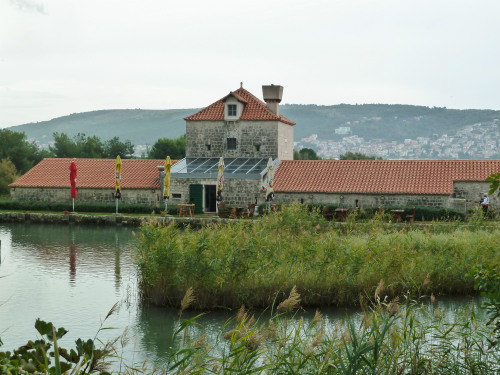
Back in Split we found free Wi-Fi in Cafe Luxor, occupying one of the colonnaded buildings in the Peristil. Rumour has it that it’s the oldest cafe in Split, but if not, it certainly has the oldest architectural features – the medieval loggia, the marble circle on the floor ( which is the base of the former Temple of Venus), the exposed walls, and ceiling murals make this a cafe with a difference. Good coffee and cake too!
Back at the dock waiting for the tender to take us back to the ship, I decided to try and withdraw some local currency from my debit card at an ATM. Unfortunately the machine did not recognise an Australian debit card and promptly swallowed it! There was no way we could get it back as it was not connected to a bank and the tender had by now arrived. Luckily larger towns in Croatia accept Euro as well as Kuna and we had other cards, but for the rest of the trip I had to put everything on credit. I have not been game to try a debit card overseas since.
Related articles
- The Dalmatian Coast: Split, Hvar and Other Islands (theepochtimes.com)
- back to the past (towelspacked.wordpress.com)
